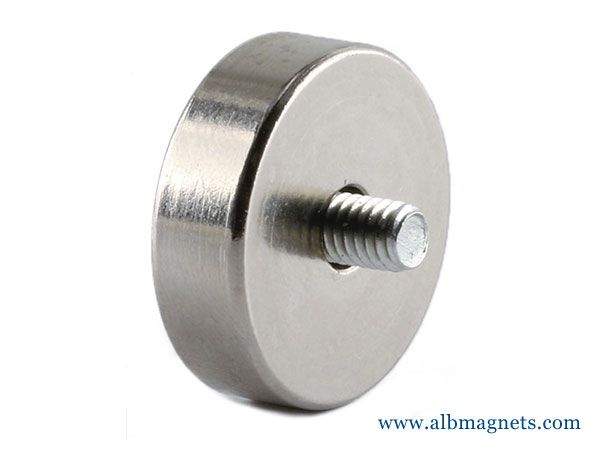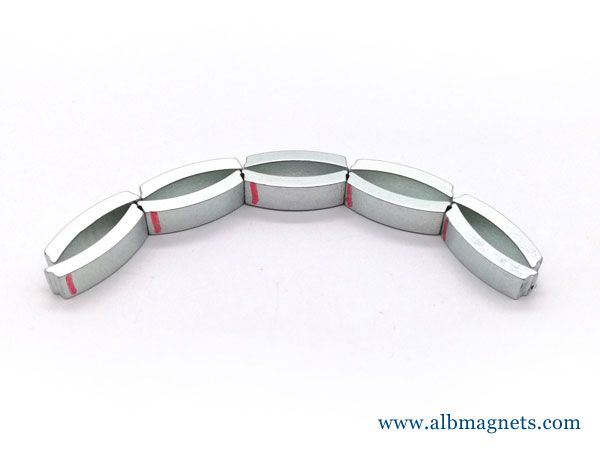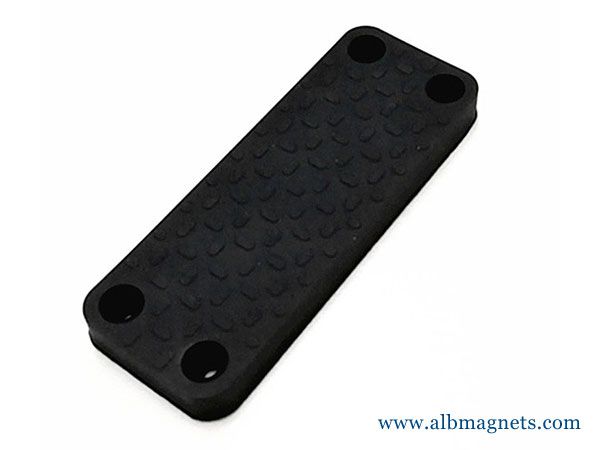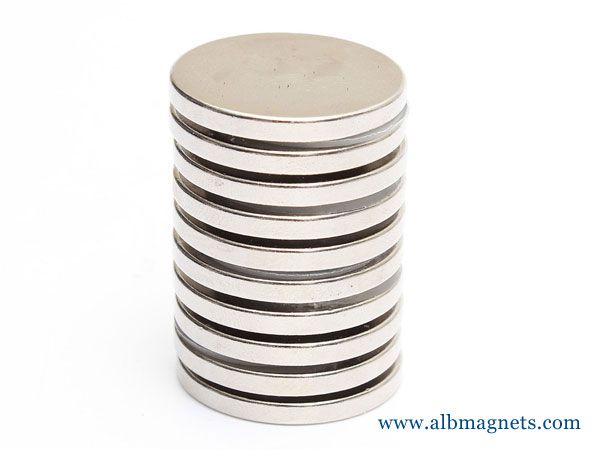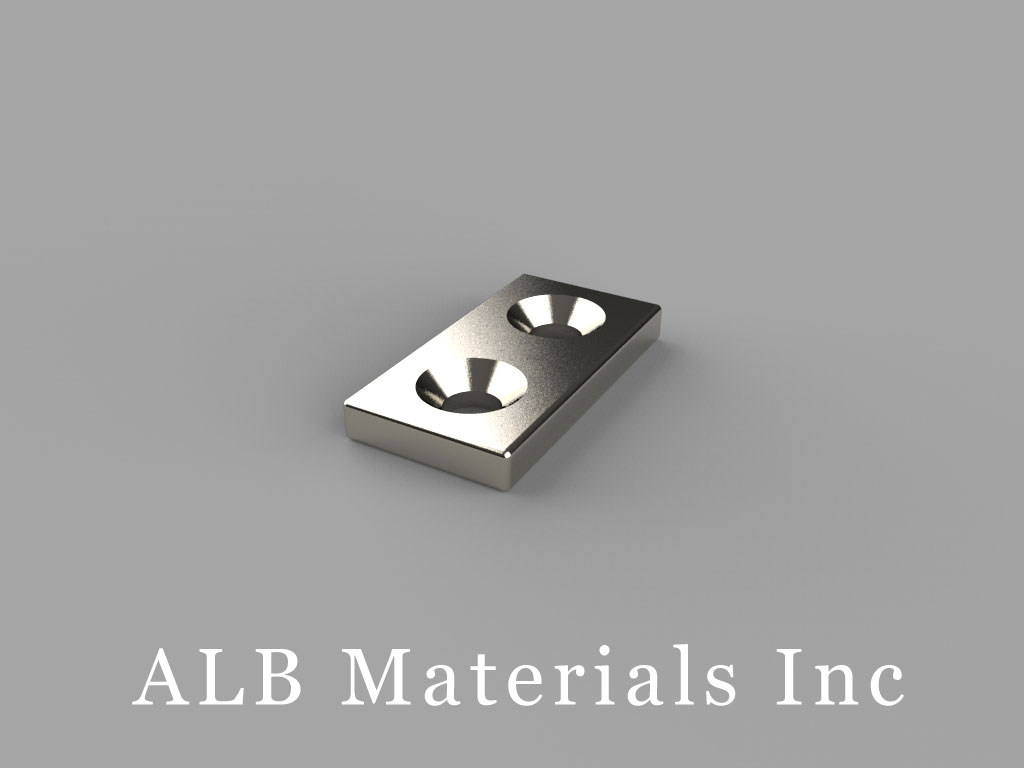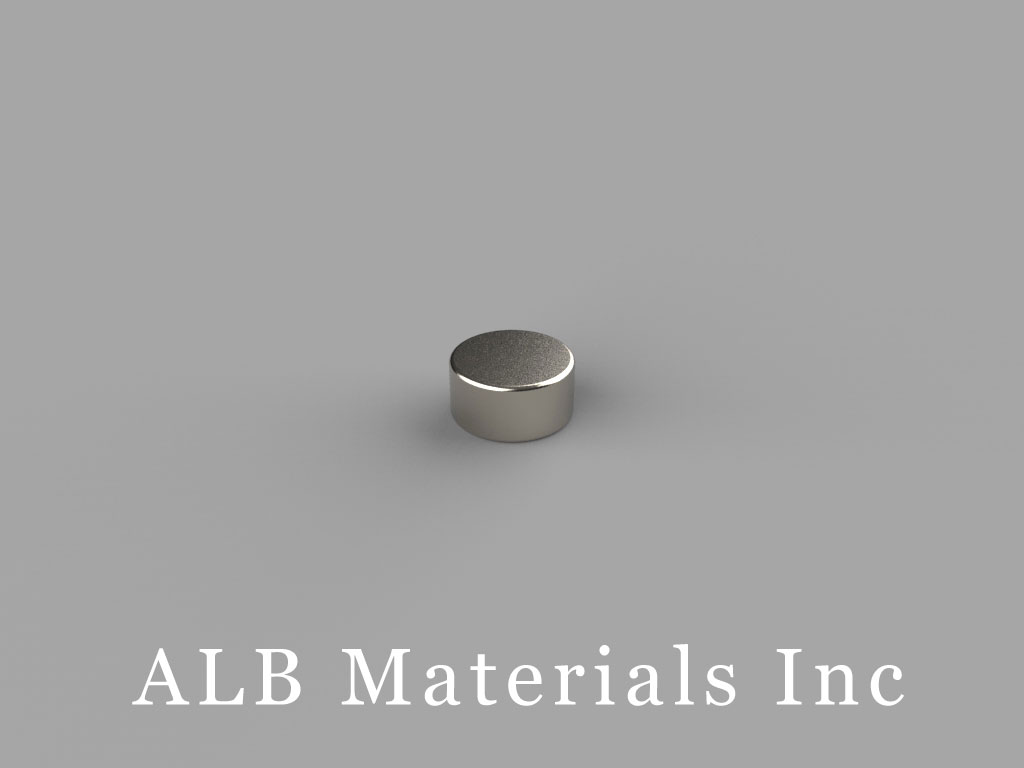401 Ryland St. Ste 200-A,
Reno, NV 89502
United States
E-mail: sales@albmaterials.com
- D29 Neodymium Magnets, 1/8 inch dia. x 9/16 inch thick
- C-D4H5-N45 Neodymium Magnet, 4x5mm Cylinder Magnet
- DZX0C Neodymium Magnets, 4 inch dia. x 3/4 inch thick
- BAA4 Neodymium Magnets, 5/8 inch x 5/8 inch x 1/4 inch thick
- MMS-B-Z0 Standard Mounting Magnets
- SW-L Neodymium Magnets, 1 inch dia. x 0.08 inch thick
- RC22 Neodymium Magnets, 3/4 inch od x 1/8 inch id x 1/8 inch thick
- B60x20x5mm Neodymium Magnet, 60 x 20 x 5mm Block Magnet
- MM-C-36 Metric Mounting Magnets
- BZ0Z02-N52 Neodymium Magnets, 3 inch x 3 inch x 1/8 inch thick
- DY0Y8 Neodymium Magnets, 2 inch dia. x 2 1/2 inch thick
- B224 Neodymium Magnets, 1/8 inch x 1/8 inch x 1/4 inch thick
- POT05 Series Mounting Magnets and Pot Magnets
- DXCX4 Neodymium Magnets, 1 3/4 inch dia. x 1 1/4 inch thick
- DA2 Neodymium Magnets, 5/8 inch dia. x 1/8 inch thick
- BX084-N52 Neodymium Magnets, 1 inch x 1/2 inch x 1/4 inch thick
1,000-Tesla Magnet
1,000-tesla magnet
How strong are magnets? Here is a list of how strong some magnetic fields can be:
The smallest value in a magnetically shielded room
10^-14 Tesla
100,000,000,000 Tesla
10^15 Gauss
What is Tesla? It is a unit of magnetic flux density. It is also equivalent to these other units:
1 Weber per square meter
10,000 Gauss (10 kilogauss)
10,000 magnetic field lines per square centimeter
65,000 magnetic field lines per square inch.
Now, 1Gauss is about 6.5 magnetic field lines per square inch.
If you place the tip of your index finger to the tip of your thumb, enclosing approximately 1 square inch, four magnetic field lines would pass through that hole due to the earth's magnetic field!
Measuring the strength of magnets
1. Hall-Effect Devices
A Hall-effect device is a piece of material that is affected by a magnetic field. Bypassing a constant amount of current through it in one direction, and by placing it in a magnetic field in another direction, we can measure a voltage across it in the third direction. This voltage is proportional to the strength of the magnetic field. This can be calibrated to provide a certain mV change for every Gauss of the magnetic field. This effect was discovered by Edwin Hall in 1917. The materials often used today in these devices are indium arsenide or gallium arsenide. There are also superconducting devices that can measure minute magnetic fields, called SQUIDS.
What can you do with a Hall-effect device? Build an electronic circuit which will amplify the voltage across the device and calibrate it so you can measure a voltage and translate that into a Gauss measurement. For such a unit, check out the page on building a Gaussmeter.
2. Paper clips and BB's
If you don't have a way to build a gaussmeter or magnetometer in order to measure the strength of the magnetic flux density of a magnet, then what else could you do?
1. Count how many paperclips or staples you can attach end to end from the north pole to the south pole.
2. Count how many paperclips or staples you can attach to one of the magnet's poles.
3. Have a big pile of paperclips or staples on the table and count how many will stick to the magnet, all over its surface.
4. Have a big pile of small (1 to 4mm in diameter, or 1/32 to 1/8" diameter) steel ball bearings or BB's in a plastic container, and count how many will stick to the magnet after you place the magnet into the middle of the pile and try to completely cover it with the BB's. Remove the magnet all covered with BB's, and take it to another plastic container to pull off and count the number of BB's that the magnet was able to attract to itself.
3. Magnetometer
This is a meter my brother had purchased in order to ensure there was no residual magnetic field left on some equipment. It would show polarity and magnitude. It was made by Anno Instruments in Indianapolis. It is very sensitive. The area at the bottom of the meter is placed near the magnetic field to be measured.
It is fairly easy to determine which rod is a magnet and which is not. I suspect that if you actually had those two rods in front of you, you would be able to figure it out. Here's a straightforward method to determine that.
Let's call one rod A and the other rod B.
(Perhaps you could keep one in the left hand and the other in the right hand).
Next, touch the end of A to the middle of B.
If it sticks, then A is the magnet and B is iron.
If it does not stick, then B is the magnet and A is iron.
To double-check this, touch the end of B to the middle of A.
If it sticks, then B is the magnet and A is iron.
If it does not stick, then A is the magnet and B is iron.
Why does this work?
In the center between the poles of a magnet, there is a very little magnetic field or flux outside the magnet. All of the flux is inside the magnet itself. Because of this, iron is weakly attracted to the middle of the magnet if at all. However, the end or pole of a magnet will easily stick to any part of an iron rod.
Three rods The solution to this is similar to the one above, but it just requires a little more work.
Let's call one rod A, one rod B, and the last rod C. Have them lined up on the floor in that sequence.
First, touch the end of A to the middle of B.
If it sticks, then A is the magnet, B is iron, and C is brass.
If it does not stick, continue.
Next, touch the end of A to the middle of C.
If it sticks, then A is the magnet, C is iron, and B is brass.
If it does not stick, continue.
Next, touch the end of B to the middle of A.
If it sticks, then B is the magnet, A is iron, and C is brass.
If it does not stick, continue.
Next, touch the end of B to the middle of C.
If it sticks, then B is the magnet, C is iron, and A is brass.
If it does not stick, continue.
Next, touch the end of C to the middle of A.
If it sticks, then C is the magnet, A is iron, and B is brass.
If it does not stick, continue.
Lastly, touch the end of C to the middle of B.
If it sticks, then C is the magnet, B is iron, and A is brass.
If it does not stick, something is wrong and you should try it all again.
Why does this work?
In the center between the poles of a magnet, there is a very little magnetic field or flux outside the magnet. All of the flux is inside the magnet itself. Because of this, iron is weakly attracted to the middle of the magnet if at all. However, the end or pole of a magnet will easily stick to any part of an iron rod. Also, brass is not attracted to a magnet, so it will never stick to a magnet.
Magnetic field milestone researchers generate the strongest-ever 1,000-tesla magnet.
The megagauss generator just before it’s switched on.
Some parts of the device are exceedingly rare and very few companies around the world are capable of producing them.
Physicists from the Institute for Solid State Physics at the University of Tokyo have generated the strongest controllable magnetic field ever produced.
The field was sustained for longer than any previous field of similar strength.
This research could lead to powerful investigative tools for material scientists and may have applications in fusion power generation.
Magnetic fields are everywhere.
From particle smashers to the humble compass, our capacity to understand and control these fields crafted much of the modern world.
The ability to create stronger fields advances many areas of science and engineering.
UTokyo physicist Shojiro Takeyama and his team created a large sophisticated device in a purpose-built lab, capable of producing the strongest controllable magnetic field ever using a method known as electromagnetic flux compression.
“Decades of work, dozens of iterations and a long line of researchers who came before me all contributed towards our achievement,” said Professor Takeyama.
“I felt humbled when I was personally congratulated by directors of magnetic field research institutions around the world.”
Sparks fly at the moment of activation.
Four million amps of current feed the megagauss generator system, hundreds of times the current of a typical lightning bolt.
But what is so interesting about this particular magnetic field?
At 1,200 teslas - not the brand of electric cars, but the unit of magnetic field strength - the generated field dwarfs almost any artificial magnetic field ever recorded;
however, it’s not the strongest overall.
In 2001, physicists in Russia produced a field of 2,800 teslas, but their explosive method literally blew up their equipment and the uncontrollable field could not be tamed.
Lasers can also create powerful magnetic fields, but in experiments, they only last a matter of nanoseconds.
The magnetic field created by Takeyama’s team lasts thousands of times longer, around 100 microseconds, about one-thousandth of the time it takes to blink.
It's possible to create longer-lasting fields, but these are only in the region of hundreds of teslas.
The goal to surpass 1,000 teslas was not just a race for the sake of it, that figure represents a significant milestone.
Earth’s own magnetic field is 25 to 65 microteslas.
The megagauss generator system creates a field of 1,200 teslas, about 20 million to 50 million times stronger.
“With magnetic fields above 1,000 Teslas, you open up some interesting possibilities,” says Takeyama.
“You can observe the motion of electrons outside the material environments they are normally within.
So we can study them in a whole new light and explore new kinds of electronic devices.
This research could also be useful to those working on fusion power generation.”
This is an important point, as many believe fusion power is the most promising way to provide clean energy for future generations.
“One way to produce fusion power is to confine plasma - a sea of charged particles - in a large ring called a tokamak in order to extract energy from it,” explains Takeyama.
“This requires a strong magnetic field in the order of thousands of teslas for a duration of several microseconds.
This is tantalizingly similar to what our device can produce.”
This is the business end of the megagauss generator system.
The coil rapidly collapses the liner, compressing the field within to strengthen it.
The liner implodes at 5km/s, almost 15 times the speed of sound.
The magnetic field strength is measured by shining a laser into the center of the liner.
The field twists the polarization of the laser incident light, and the degree of the twist or polarization is measured to calculate the field strength.
This method is called Faraday rotation.
100 Tesla Pulsed Magnet
Three circuits comprise the large 100-tesla outsert magnet, which is powered by a 1.4-gigawatt generator
Stored Energy (100 T): Outsert: 120 megajoules;
Strength: 100 tesla
Stored Energy (90 T): Outsert: 95 megajoules;
Outsert: 120 megajoules
Insert: 1.4 megajoules
The magnets at other MagLab facilities are superconducting, resistive or a combination of the two (the 45-tesla hybrid ).
The magnets at the Los Alamos facility are pulsed magnets.
The fields they generate are so powerful they can be sustained only for a very short time.
The field of this magnet lasts 15 milliseconds, allowing precise scientific measurements at the highest fields in the world.
Although 15 milliseconds may not sound like much time, it is about two thousand times longer than what is otherwise available at this field intensity.
This magnet is powered by four separate electrical circuits.
Three circuits comprise the large 100-tesla outsert magnet, which is powered by a 1.4-gigawatt generator (a gigawatt is equal to 1,000 megawatts ).
The insert circuit is powered by a 2-megajoule capacitor bank.
The present peak field is 37 tesla for the outsert and 53 teslas for the insert.
When the system reaches 100 teslas, the outsert magnet will generate 40 to 44 tesla and the insert will generate between 55 to 60 tesla.
This magnet is inside a liquid nitrogen container called a dewar, which keeps the magnet cool at about -198.15 degrees Celsius (-324.67 degrees Fahrenheit).
This keeps the incredible discharge (“pulse”) of electricity that it receives from the power sources from overheating the magnet.
A 100-tesla magnet could have a profound impact on a wide range of scientific investigations, from studies of how materials behave under the influence of very high magnetic fields to research into the quantum behavior of phase transitions in solids.
Researchers can explore extremes of low temperature and high magnetic field, which will contribute to our understanding of superconductivity, magnetic-field-induced phase transitions, and so-called quantum critical points, in which small changes in materials properties at very low temperature have dramatic effects on physical behavior.
The magnet could also be used as a nanoscale microscope.
In March 2012, scientists at the Los Alamos National Laboratory campus of the National High Magnetic Field Laboratory successfully produced the world's first 100 Tesla non-destructive magnetic field.
Most powerful magnetic field blows up the science lab
With magnetic fields above 1,000 teslas, you open up some interesting possibilities," lead researcher Takeyama explained.
Scientists blow up their lab after creating the strongest magnet ever
It's a record magnetic field, yeah.
Scientists knew that it would probably explode, but they did not expect to reach such a record magnetic field.
Magnetic fields are measured in teslas, after Nikola Tesla.
This one reached a record 1,200 teslas, 400 times stronger than an MRI;
"With magnetic fields above 1,000 teslas, you open up some interesting possibilities," lead researcher Takeyama explained.
"You can observe the motion of electrons outside the material environments they are normally within.
So we can study them in a whole new light and explore new kinds of electronic devices.
This research could also be useful to those working on fusion power generation."
The study, published in Review of Scientific Instruments, was released on September 17.
To achieve the record, the team used a technique known as electromagnetic flux-compression (EMFC).
The instrument, which generates a low-strength magnetic field of 3.2 teslas, was attached to a row of capacitors that generate 3.2 megajoules, which is a huge amount of energy.
This compresses the magnetic field into a tiny area extremely quickly.
But, as the team predicted, it can't be compressed for long, eventually creating a shock wave that rips the instrument apart.
They expected this to happen after about 700 teslas, as that's what it was built to withstand.
But incredibly, it reached 1,200 before exploding.
1,200 teslas later...
a huge white light engulfs the lab.
Part of the content in this article is reproduced from other media for the purpose of transmitting more information and does not mean that this website agrees with its views or confirms the authenticity of its content. It shall not bear direct responsibility and joint liability for the infringement of such works.
If there is any infringement, bad information, error correction, and other issues in the content of this page, please contact us at info@albmaterials.com
Link to this article: https://www.albmagnets.com/blog/1000-tesla-magnet.html
How to choose and buy a strong neodymium magnet? ALBMagnets is a professional company for strong magnet design and manufacturing,
providing you with reliable N35, N38, N42, N52, N42SH and other grade super neodymium magnets and SmCo rare earth magnets.




